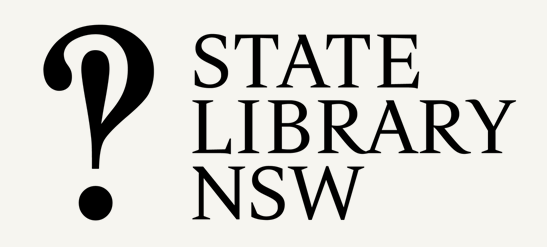Protocol 5 is about how collection content by and about Aboriginal and Torres Strait Islander peoples is described and classified in our catalogues and library management systems. It recognises that the indexing terminology, subject headings and classification systems that have been in use for a long time contain outdated, inaccurate and value-laden terms, and that these can obstruct access to collections.
Access to Aboriginal and Torres Strait Islander-related collection materials can be significantly improved by identifying items by their geographic, language and cultural identifiers – that is, the words that individual clans or language groups use to describe themselves or their culture.
There are resources that can help us find these descriptors, such as AIATSIS’s Pathways Thesaurus, which provides culturally appropriate subject headings that describe material relating to Aboriginal and Torres Strait Islander peoples and issues more accurately. For instance, an image depicting a ceremony can specify whether it is performed for a specific occasion (such as initiation or marriage), for a specific purpose (such as rain making), or by men or women.
In 2018, AUSTLANG Australian Indigenous language codes were added to the Library of Congress’s MARC Language Codes list. Where previously materials in Indigenous languages were catalogued under a catch-all ‘Australian languages’ descriptor in catalogue metadata, AUSTLANG codes identify the specific language/s used, making materials easier to discover, for researchers and family historians alike.
By improving the metadata in our catalogues when we create new records and update old records, we can make them more accessible and more accurate.
Protocol 5 also recommends that Aboriginal and Torres Strait Islander peoples are consulted in relation to catalogue description and classification of collection materials, and that there should be opportunities for them to annotate and describe material that relates to themselves and their communities.
In this section, we’ll look at a case study about a bespoke classification system for collections in remote Aboriginal community libraries developed by the Northern Territory Library using a participatory approach with the communities involved.
In the video below, Allison Lubransky-Moy talks about the effects of using or maintaining outdated, inaccurate or value-laden terms, and some of the ways we can address this in our description and classification practices.
Case studies
> Consulting with Elders to improve collection information and management
The National Library of Australia learned many valuable lessons from working with Pitjantjatjara Elders to find out more about heritage photographs in the library’s collection.
> Galiwin’ku community library classification system
The Northern Territory Library partnered with East Arnhem Regional Council to re-imagine a new and different classification system for Galiwin’ku Community Library, reforming collection classification from a traditional Western library-orientated structure to a culturally relevant user-orientated structure and layout.
Further resources
Policies and guidelines
Position statement: Aboriginal and Torres Strait Islander collections and services in NSLA libraries – NSLA (2021)
Code of Ethics for Aboriginal and Torres Strait Islander Research – AIATSIS (2020) The code ensures that research with and about Aboriginal and Torres Strait Islander peoples follows a process of meaningful engagement and reciprocity between the researcher and the individuals and/or communities involved in the research.
Tutorial: Connecting to country – AIATSIS (2015) “This tutorial gives an introduction to best practice for establishing headings for Australian place names. The tutorial is aimed at cataloguers and indexers working with material with Indigenous content.” See also: Pathways Thesaurus
About AUSTLANG – AIATSIS (2019) In 2018 the Library of Congress accepted a proposal by the Australian Institute of Aboriginal and Torres Strait Islander Studies and the National Library of Australia to add AUSTLANG to the MARC Language Source Codes list. Libraries across Australia and around the world are now able to use an appropriate, authorised standard to identify Australian Indigenous language materials in their collections, replacing the single MARC language code ‘aus’ with alpha-numeric codes for hundreds of different language varieties: MARC language Source Codes list.
Reimagine Descriptive Workflows: A Community-informed Agenda for Reparative and Inclusive Descriptive Practice – Rachel L. Frick and Merrilee Proffitt (OCLC 2022) The Reimagine Descriptive Workflows project aimed to better understand and address harm caused by cultural institutions’ collection descriptions. The resulting agenda document is constructed to instruct and chart a path toward reparative and inclusive description. It includes examples of actions and exercises that can help frame local priorities and areas for change, and also provides case studies to inspire local work.
Words Matter: An unfinished guide to word choices in the cultural sector – Wayne Modest and Robin Lelijveld (Research Center for Material Culture, 2018) “Words and the norms around language are constantly changing. Being aware of why and how these changes come about is important if we are to be inclusive institutions.” This guide includes a list of words, an explanation of why a particular word is considered sensitive or contested, and alternative terms that may be used.
Articles and presentations
Trust in Scholarly Communications and Infrastructure: Indigenous Data Sovereignty – Katharina Ruckstuhl (Frontiers in Research Metrics and Analytics, 2022) This article examines data sovereignty from the perspective of Indigenous peoples, focusing on data held in government or state-funded research organisations, including Libraries, galleries and museums.
List of statements on bias in library and archives description – Cataloging Lab (2020) A compilation of statements from libraries and archives on harmful or offensive language in description and bias in cataloging.
Towards respectful and inclusive description – Merrilee Proffitt (OCLC, 2020) “As we have been engaged in conversations about the difficulty of cataloging topics relating to Indigenous peoples in respectful ways, OCLC Research has sought to better understand the issues through readings, presentations, and structured conversations with library staff.”
The need for reclassification of First Nations original material in memory institutions – Nathan Sentance (Archival Decolonist, 2017) “Galleries, Libraries, Archives and Museums (GLAM) organisations have in many ways failed to correctly classify First Nations material, particularly original material in their collections. This is the result of the classificatory structures being used, such as the Dewey Decimal System or subject thesauri, by GLAM organisations were developed based on the epistemology systems of the dominant culture, which in the case of most colonised countries, is one of white Judeo-Christian.”
Decolonising Historical Maps – National Library of Australia (2019) Curatorial Research Fellow Bess Moylan explores how a better understanding of historical maps can support research into Aboriginal cultural landscapes. See also: Decolonising Historical Maps – video (2019)
Gaps in the descriptive metadata of our national memory: digital engagement with colonial photographs of Indigenous Australians – Kathryn Ross (2016) “This conference paper discusses the value, relevance and role of historical images of Aboriginal and Torres Strait Islander people, along with the descriptive metadata that was recorded at the time of capture.”
Indigenous Academic Library Serves as a Model for Centering First Nations Cultures, Communities, Collections – Karen Adjei (Library Journal 2019 “For the past 26 years, the Xwi7xwa Library at UBC in Vancouver— the only Aboriginal branch of a university library system in Canada—has served as a model for how educational and community institutions can center the knowledge and experiences of the communities they serve by better representing them in the collections they share.”
Audio and video
Webinar: Reimagine Descriptive Workflows, an Australasian perspective – NSLA/OCLC (video 2022) Discussion between Australasian members of the Reimagine Descriptive Workflows project advisory group and others working in this area about how the project’s resulting community agenda and framework of guidance might be used by libraries and archives in our region.
In search of Indigenous Australian languages webinar – National Library of Australia (video, 2019) “This webinar will give you the tools to apply Austlang codes to catalogue records improving the discovery of Indigenous Australian language material.”
Finding family history in our pictures and manuscripts collections: a collection conversation – National Library of Australia (video, 2017) Shannon Sutton, Newspapers and Family History Librarian at the National Library of Australia, discusses how exploring the Library’s pictures and manuscripts collections lead to a finding documentary evidence of some of the oral histories passed down through his family.
Engaging community language researchers with Indigenous languages collections – Desmond Crump (audio, AIATSIS, 2017) “SLQ has implemented a number of innovative practices to enhance the accessibility/discoverability of collections, such as ‘tagging’ over 2,500 items in SLQ collections with AIATSIS Language Codes, interactive language resources map, compilation of wordlists/resources and facilitating the networking and sharing of ideas and resources via the SLQ Indigenous Languages Blog.”









